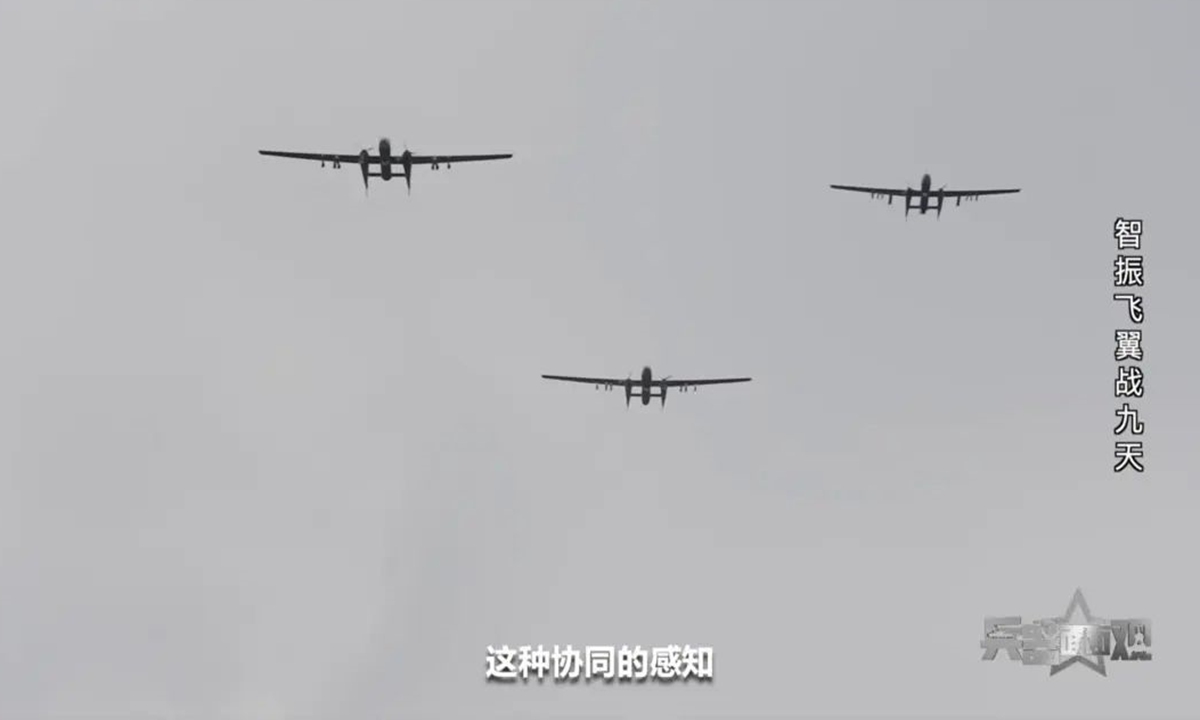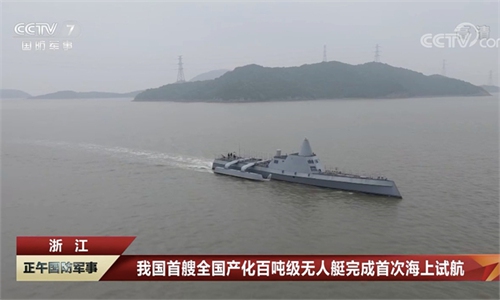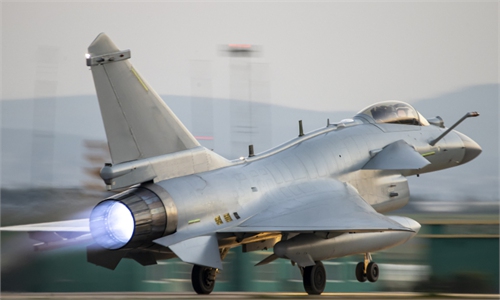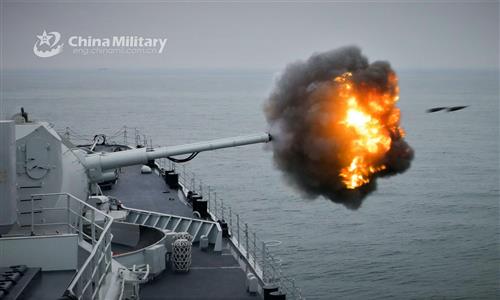
Three Twin-tailed Scorpion drones fly in formation on an undisclosed date in the first half of 2023. It marks the first time China's domestically developed long-endurance drones have flown in a close formation while fully loaded with munitions. Photo: Screenshot from China Central Television
China recently carried out its first technical demonstration test in which three Twin-tailed Scorpion unmanned aircraft, a type of armed reconnaissance drone that was spotted in missions around the island of Taiwan and beyond the first island chain several times, formed close formations.
Supported by effective control systems, such formations of large attack drones would greatly enhance combat capabilities, experts said on Tuesday.
In the test flight, three Twin-tailed Scorpion drones fully loaded with a wide variety of munitions including precision bombs, missiles and smaller drones took off from an airfield one by one before forming into different formations including a line formation and a triangle formation, China Central Television (CCTV) reported on Tuesday.
It marked the first time China's domestically developed long-endurance drones have flown in a close formation while fully loaded with munitions, CCTV said.
Steering the in-formation flight from a ground station rather than directly in the sky is challenging for drone operators, because the speeds, heights and flight directions of all drones must keep pace with each other, the report said.
This demonstration test proved that the fully loaded Twin-tailed Scorpion drones possess outstanding controllability, because carrying heavy payloads usually make aircraft less maneuverable, Wang Ya'nan, chief editor of the Beijing-based Aerospace Knowledge magazine, told the Global Times on Tuesday.
It further showed the drones' capabilities in flying in formation, Wang said. "Traditionally this is done manually, meaning that operators control the drones on the ground. But China is also exploring to develop an autonomous control software that enables drones to form formations on a single command," he said.
The defense authority on the island of Taiwan and Japan's Defense Ministry have reported several occasions in which they spotted TB-001 Twin-tailed Scorpion drones of the Chinese People's Liberation Army (PLA) flying around the island of Taiwan and across the Miyako Strait into the Pacific Ocean over the past few years. In those cases, the PLA drones flew alone.
If drones fly in formations, it would mean a significant combat capability boost, because they can carry much more munitions, Wang said.
With advanced control systems, small drones can form swarm clusters, while large drones like the Twin-tailed Scorpion can form groups of somewhere around three and achieve the best combat efficiency, Wang said.
The Twin-tailed Scorpion has two variants, the Twin-tailed Scorpion known as the TB and the Twin-tailed Scorpion A known as the TB-A, according to the website of Tengden, the developer of the drone.
The TB has a double-engine and double-generator configuration with a length of 10 meters, wingspan of 20 meters, a maximum takeoff weight of 2,800 kilograms, a range of 6,000 kilometers, an endurance of 35 hours, a maximum speed of 300 kilometers an hour and a service ceiling of 8,000 meters.
Added with a third engine and generator, the TB-A is slightly larger in length and wingspan and has a maximum takeoff weight of 3,250 kilograms, a range of 8,000 kilometers, an endurance of 40 hours, a maximum speed of 380 kilometers an hour and a service ceiling of 10,000 meters.
Capable of carrying out reconnaissance, surveillance and attack missions, the Twin-tailed Scorpion can carry different precision munitions including thermobaric bombs, armor-piercing bombs, delayed-action bombs as well as smaller drones for different missions, CCTV reported.




